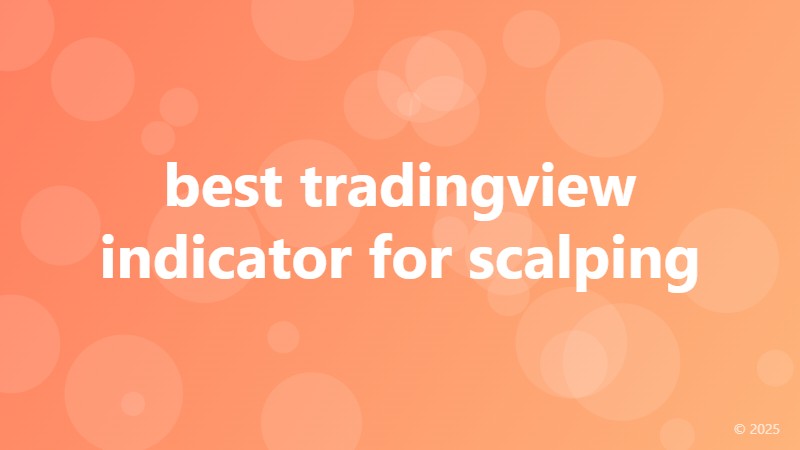best tradingview indicator for scalping

What is Scalping in Trading?
Scalping is a popular trading strategy that involves holding positions for a very short period, typically just a few minutes. The goal of scalping is to make a profit from the small price movements that occur frequently in the market. Scalpers rely on making a large number of small profits, rather than holding out for a single large gain. To be successful in scalping, traders need to be able to quickly identify profitable trades and execute them rapidly.
The Importance of Indicators in Scalping
In scalping, indicators play a crucial role in identifying potential trading opportunities. A good indicator can help traders to quickly identify trends, detect changes in market sentiment, and spot potential reversals. With so many indicators available, it can be overwhelming for traders to choose the best one for their scalping strategy.
Top TradingView Indicators for Scalping
TradingView is a popular platform for traders, offering a vast array of indicators that can be used for scalping. Here are some of the best TradingView indicators for scalping:
1. Bollinger Bands
Bollinger Bands are a popular indicator that can be used to identify volatility in the market. By setting the bands to a shorter period, scalpers can use them to identify potential breakout trades.
2. Relative Strength Index (RSI)
The RSI is a momentum indicator that can be used to identify overbought and oversold conditions in the market. Scalpers can use the RSI to identify potential reversals and take advantage of quick price movements.
3. Moving Averages
Moving averages are a simple yet effective indicator that can be used to identify trends. Scalpers can use multiple moving averages with different periods to identify potential trading opportunities.
4. Stochastic Oscillator
The stochastic oscillator is another popular momentum indicator that can be used to identify overbought and oversold conditions. Scalpers can use the stochastic oscillator to identify potential reversals and take advantage of quick price movements.
How to Choose the Best TradingView Indicator for Scalping
With so many indicators available on TradingView, it can be overwhelming for traders to choose the best one for their scalping strategy. Here are some tips to help you choose the best indicator:
Firstly, it's essential to understand your trading strategy and what you're looking for in an indicator. Are you looking for an indicator that can help you identify trends, or one that can detect changes in market sentiment?
Secondly, backtest the indicator using historical data to see how it performs in different market conditions. This will help you to identify any biases or weaknesses in the indicator.
Finally, combine the indicator with other forms of analysis, such as chart patterns and fundamental analysis, to get a more comprehensive view of the market.
Conclusion
In conclusion, scalping is a popular trading strategy that requires a good understanding of the market and the right indicators. By using the best TradingView indicators for scalping, such as Bollinger Bands, RSI, moving averages, and the stochastic oscillator, traders can identify profitable trades and execute them rapidly. Remember to backtest the indicator and combine it with other forms of analysis to get the best results.